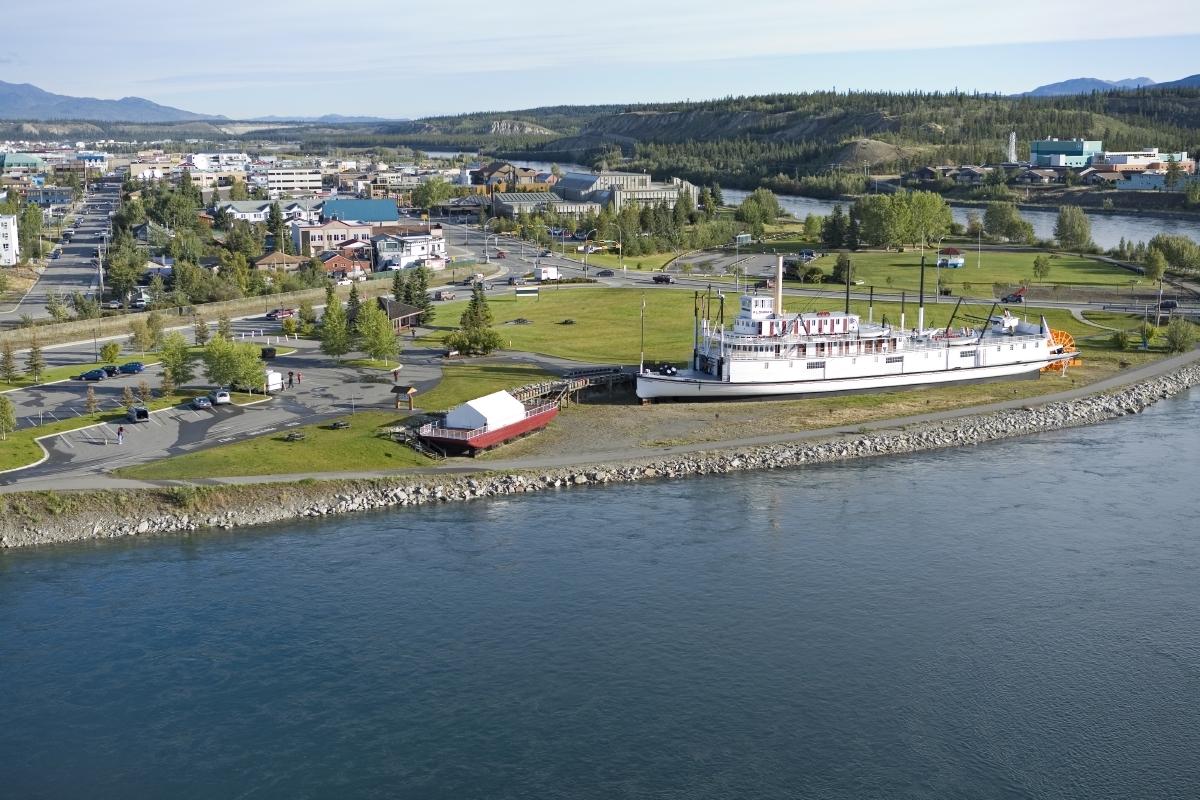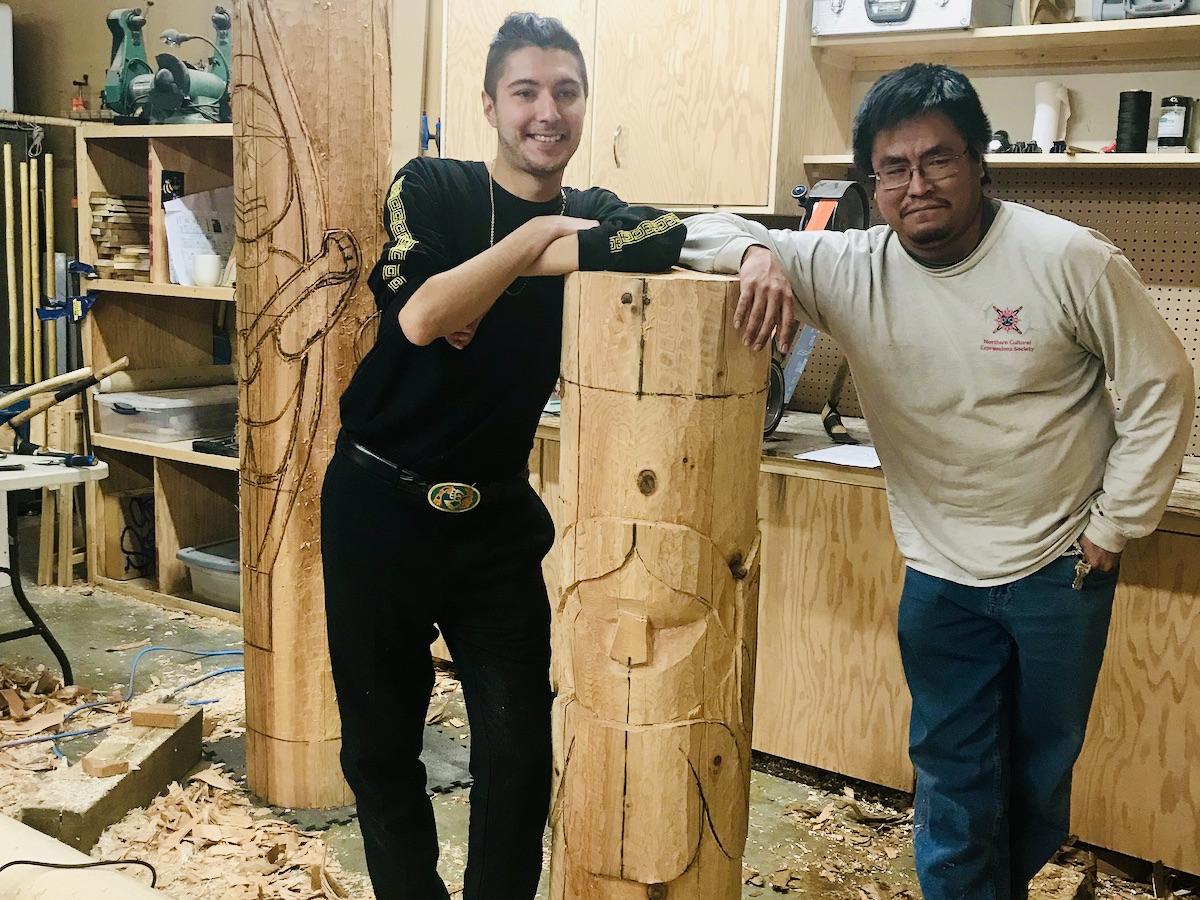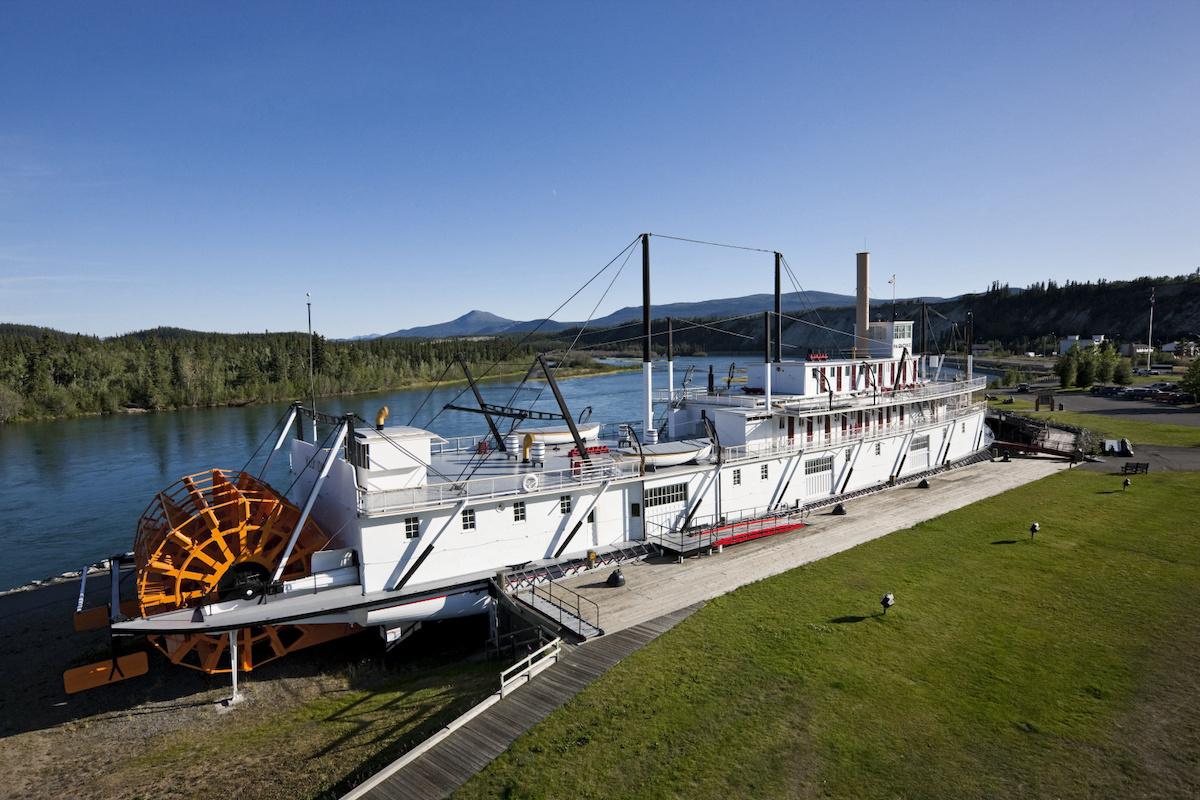
A 2007 aerial shot of the S.S. Klondike National Historic Site/Government of Yukon, Fritz Mueller
For years, the story of the S.S. Klondike was a mostly romantic one that revolved around the historic sternwheeler that travelled the Yukon River from 1929 to 1955 carrying silver-lead ore, freight, passengers and tourists. But the tale of how a steam-powered boat retired and found new life in Whitehorse as the S.S. Klondike National Historic Site glossed over negative parts of its legacy.
Now — with new interpretive panels coming soon and new background material already provided to heritage interpreters — the expanded story acknowledges that it takes place on the traditional territories of the Kwanlin Dün First Nation and the Ta’an Kwäch’än Council. It also shares how riverboats connected some people but divided others because sternwheelers were used to take Indigenous children away from their homes as far north as Dawson City to residential school in what's now called Carcross.
“Long after the schools closed, the impacts are still felt across generations of Indigenous families,” reads one of the new panels for the site. “Canadian society struggles to address this past injustice.”
The panels also speak to the way that most riverboat jobs went to white men, how Indigenous travellers were usually sent to the barge or forced to stay on the lower decks, how the Canadian government relocated Indigenous people to a segregated village across the river from Mayo in 1915, and how the mines impacted Indigenous land and ways of life.

A few of the new, outdoor interpretive panels/Parks Canada
The panels will celebrate Indigenous people connected to the riverboat story, such as Chief Jim Boss who ran a roadhouse and sold firewood and fish to riverboats, and Tlingit trapper/photographer George Johnston who became the first car owner in Teslin when he had a Chevrolet shipped by riverboat to his roadless village.
“It’s a more balanced view of history,” acknowledges Stella Patera, visitor experience and site manager for the national historic site. “There is not only a positive impact with the arrival of the riverboat, but also a negative legacy.”
Whiskey Flats, a squatter’s community of about 340 people living in shacks and tents, was located on the grassy triangle of riverside land where the S.S. Klondike now rests until the government evicted everyone in the early 1960s to make way for dry-docked sternwheelers. “It’s a negative story that is in some people’s memories,” says Patera, “but we didn’t talk about it until a couple of years ago.”
The project began in 2018 and will see 23 new outdoor panels, some with audio from a storytelling event, to replace the 10 current ones. About a third of the work is done, and the rest should be installed by June. The S.S. Klondike season is slate for May 22 to September 6, depending on Covid-19 restrictions. The restored and refurbished boat will only be open for 45-minute guided tours during the pandemic, and some of the new historical information was worked in last season. There will be dialogic interpretation that invites visitors to engage in respectful discussions based on either their questions or questions from the interpreters.
“We also knew that we needed something more visual at the site to show that we are a First Nations land as well as a Parks Canada site,” says Patera. “The vision was to reflect the Indigenous presence on this land.”
Two Indigenous artists/carvers have been commissioned to create three cedar poles. Lead artist Dustin Sheldon, born in Victoria and raised in Whitehorse, is a pencil artist with ancestry from the Teslin Tlingit First Nation. Lead carver Duran Henry is a Tlingit/Southern Tutchone member of the Kwanlin Dün First Nation. They’re both connected with the Northern Cultural Expressions Society and the cedar posts reference the kind once carved into living trees to convey messages.
From three, 14-foot red cedar logs, the artists rounded and fleshed out poles with Sheldon's designs that will be painted and given protective stains. They'll be erected to create what Sheldon calls "a welcome forest that elucidates life by the river, before, during and after the Klondike Gold Rush."
The four-foot Spirit of Wood pole is finished and will likely be placed closest to the S.S. Klondike. It's a welcome pole with a wraparound design of the spirit figure with an axe and adze (a cutting tool used to cut or shape wood) that Sheldon says references the way First Nations people once worked as labourers cutting cords of wood for steamboats. One cord of wood was enough for just one hour of steam power on riverboats. On the S.S. Klondike, visitors will see what a cord of wood looks like, says Sheldon, and understand how the "Spirit of Wood is saying no more — now it's time to make art."

First Nations artist Dustin Sheldon, left, and carver Duran Henry, right in February 2020 when they were just starting work/Photo courtesy of Dustin Sheldon
The eight-foot post called Spirit of Water will be finished this week. It speaks to the cycle of life and features a father and mother salmon with intertwined tails and a salmon egg. A final 12-foot post, Spirit of Land, will feature a two-headed crow, a two-headed wolf and logos from the two local First Nations. A welcome figure at the top of the pole will have a hand raised to say hello and goodbye. The challenge is that the men have just lost their studio space and Sheldon isn't sure how, when or where the final pole can be finished.
"Really, truly, people don't understand the gravity of these poles and what it takes to make them," he says. "These are totem poles. They don't just get made easily. But I think they will really bring together and highlight our conneciton to the river and hopefully celebrate that." Parks Canada will eventually meet at the site with the artists to choose the appropriate spot for the three poles. The triangular plot of riverfront land features the sternwheeler, a visitor centre, a small building for a 60-seat theatre, grassy areas and a parking lot.
Noting that the current interpretive panels are about 40 years old, Patera says the life of an exhibit should only be about seven years. “From installation, there needs to be renewal after six years,” she says. “It’s good to renew, to tell stories in different ways or attract different audiences.”
The national historic site’s last management plan was released in 2010. A new one due in 2020 was delayed by pandemic restrictions, but virtual public consultations should start soon and the plan should be released by the end of 2021.

The S.S. Klondike is a sternwheeler that once travelled the Yukon River and is now a national historic site/Parks Canada
The S.S. Klondike, a big white sternwheeler, helps tell the story of how steam-powered river transportation was key to developing the Yukon and connecting it to the outside world starting in 1866 and before there were roads. It's actually the S.S. Klondike II, built by the British Yukon Navigation Co. in 1937 and the largest vessel to ply the Canadian portion of the tricky Yukon River between Whitehorse and Dawson City. She was launched at Whitehorse in 1937 to replace the first S.S. Klondike I, which sank after striking a rock wall and running aground on a submerged gravel bar.
More than 250 sternwheelers carried freight, supplies, fur traders and prospectors to supply trading posts and ferry people during the Klondike Gold Rush.
“While not unique to the Yukon, there are few other places where they were used as extensively,” notes Parks Canada on the historic site's website. “Sternwheelers were the heart of the Yukon’s transportation system for almost four generations.”
The 1955 retirement of the S.S. Klondike II marked the end of the era of commercial steamboat navigation in the Yukon. Whitehorse’s sternwheel heritage can be experienced along the waterfront Millennium Trail, downtown, along Miles Canyon Road and along the Alaska Highway.
The S.S. Klondike was designated a national historic site in 1967, carefully restored and officially opened in 1981. It draws about 40,000 visitors a year. While Canada's borders aren't currently open to international travellers, and even other Canadians can't visit the Yukon without doing a 14-day self-isolation upon arrival, Patera says providing a new exhibit and leisure opportunity for locals in difficult times "is an achievement."



Add comment